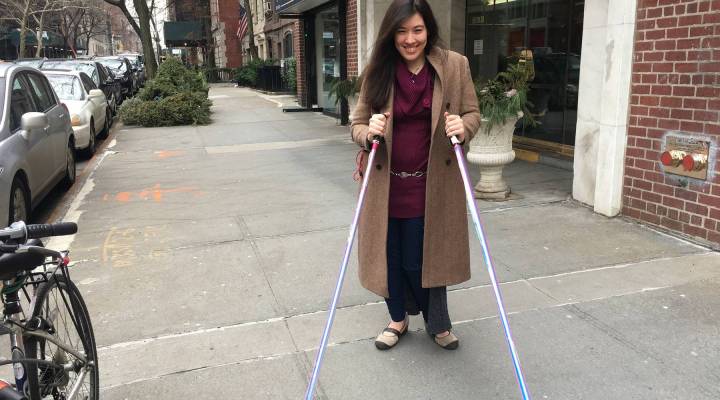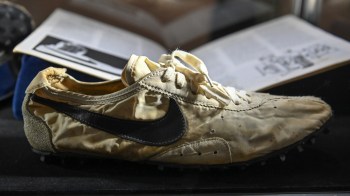
More brands are making clothing for people with disabilities
More brands are making clothing for people with disabilities

Xian Horn’s shoe rack in her Manhattan apartment is stacked with identical pairs of Mary Janes.
“I have a white pair. I have like a light green pair. I have a cherry oak pair,” she said.
Mary Janes aren’t exactly Horn’s shoe of choice. She’s a disability rights advocate and has cerebral palsy, which affects her muscle coordination. She uses poles to walk and said she’s hard on shoes. Sneakers hold up, but sometimes she wants to wear something nicer. The only shoes she deems fashionable and durable are these discontinued Mary Janes that she hunts for on eBay.
“But, you know, I’ve been wearing these on rotate for probably five years,” said Horn. “So there’s a point at which you’re like, you know it’d be nice to change it up.”
For people with disabilities, getting dressed can be one of the first obstacles in the day. Recently, a number of major brands, including Target, Tommy Hilfiger and Zappos, have released adaptive clothing lines. These items, with features like magnetic closures and one-handed zippers, are growing among big brands.
Target consulted disability nonprofits, and customers and employees, to get their adaptive lines right.
“You don’t know what others need until you really build that empathy,” explained Julie Guggemos, head of product design at Target.
Target found that while functionality is important, so is looking fashionable. That’s why the company hasn’t made adaptive lines, but adaptive versions of best-sellers.
The U.S. Census says people with disabilities make up at least 19 percent of the U.S. population, so there’s money here from a customer base that’s underserved. And the market doesn’t stop there.
“It’s not just that consumer who’s buying the adaptive clothing, it’s all consumers appreciating this extra step retailers are taking,” said Stacy Bingle, a consumer trends analyst at Mintel.
Horn is excited to see people with disabilities in fashion ads. She hopes companies will go beyond basics like jeans and T-shirts.
“We want to reflect our personalities, not just have something that fits,” she said.
So brands, if you’re listening, Horn has a plea: Make more shoes to replace those tired Mary Janes.
| A peek inside Dallas Lighthouse for the Blind is also a glimpse at manufacturing in America |
| Georgia aims to make its websites accessible for all |
| Developers look to create disability apps |
There’s a lot happening in the world. Through it all, Marketplace is here for you.
You rely on Marketplace to break down the world’s events and tell you how it affects you in a fact-based, approachable way. We rely on your financial support to keep making that possible.
Your donation today powers the independent journalism that you rely on. For just $5/month, you can help sustain Marketplace so we can keep reporting on the things that matter to you.


















